Rx Only
No descriptive printed matter, advertising and promotional materials, relating to the use of your product may represent or suggest that this test is safe or effective for the detection of SARS-CoV-2.
The emergency use of this product is only authorized for the duration of the declaration that circumstances exist justifying the authorization of emergency use of in vitro diagnostics for detection and/or diagnosis of COVID-19 under Section 564(b)(1) of the Federal Food, Drug and Cosmetic Act, 21 U.S.C. § 360bbb3(b)(1), unless the declaration is terminated or authorization is revoked sooner.
This EUA will be effective until the declaration that circumstances exist justifying the authorization of the emergency use of in vitro diagnostics for detection and/or diagnosis of COVID-19 is terminated under Section 564(b)(2) of the Act or the EUA is revoked under Section 564(g) of the Act.
Source:
- April 28, 2021. Denise M. Hinton. “COVID-19 RT-PCR Test EUA200011.” US Food & Drug Administration.

https://www.fda.gov/media/136148/download.
Food & Drug Administration. - May 11, 2021. “COVID-19 RT-PCR Test – EUA Summary.” US Food & Drug Administration.

https://www.fda.gov/media/136151/download.
Food & Drug Administration. - May 24, 2021. Center for Devices and Radiological Health. “In Vitro Diagnostics EUAs.” US Food & Drug Administration.

https://www.fda.gov/medical-devices/coronavirus-disease-2019-covid-19-emergency-use-authorizations-medical-devices/in-vitro-diagnostics-euas.
Food & Drug Administration. - July 29, 2020. US Food & Drug Administration. “Coronavirus (COVID-19) Update: FDA Authorizes First Diagnostic Test for Screening of People Without Known or Suspected COVID-19 Infection.”

https://www.fda.gov/news-events/press-announcements/coronavirus-covid-19-update-fda-authorizes-first-diagnostic-test-screening-people-without-known-or.
Food & Drug Administration.
It’s not COVID-19 that’s killing Americans. It is Remdesivir poisoning causing acute kidney failure, pulmonary edema, flooding their lungs with water and they’re drowning them to death, which is why they’re requiring, supposedly, to vent these people. And that’s what’s killing these people, is Remdesivir poisoning, not COVID-19. Now, how do I know this? Amazingly, 2.2 million people in 2020 died worldwide from COVID-19. America and all of its population, including immigrants, illegals — it doesn’t matter — citizens. The total is 4.5% of the entire world’s population is in America, yet, in the entire world where COVID went wild across the globe, there were 550,000 dead Americans. That’s almost a quarter of entire world’s deaths. Do you want to know why people in America had the highest death rates from COVID-19, supposedly? It’s because in May 2020, in the same memo, Anthony Fauci asked our federal government, in May 2020, to buy up the entire stock from Gilead Sciences, of all of their Remdesivir and only treat Americans with it until the end of 2020. And then he said, at the end of 2020, you can share it with other countries. We were the only country treating people in ICUs with Remdesivir. It was already proven to cause acute kidney failure in a combined 31% of all people in that cohort study. The 23% experienced serious adverse events of multiple organ failure and acute kidney failure. Another 8% had to be taken off the drug for the same things, but it was just worse, by day 5. That’s 31% total. So 550,000 people, a quarter of all the deaths of COVID-19 was achieved by using Remdesivir, a proven deadly treatment. If I asked you, where did 99% of everybody who died from COVID-19 in America, where did they die? In ICUs. What were they doing in ICUs? They were only [giving] Remdesivir. That’s the only thing they were allowed to use. You were actually firing doctors in hospitals using hydroxychloroquine, ivermectin, budesonide, whatever else they were using. So this is how they achieved their agenda.
— Dr. Bryan Ardis
The study performed before the COVID-19 pandemic cited by Dr. Ardis shows that Remdesivir is dangerous. And yet, Anthony Fauci said that Remdesivir was “safe and effective” when the EUA was issued. In October 2020, the FDA approved Remdesivir. From the time Remdesivir was given its EUA until its approval, 400,000 people died. The other two studies had been completed by then.
Dr. Ardis has been receiving letters from patients who have left the ICU against medical advice, thanks to information about Remdesivir shared by Dr. Ardis.
Given that Anthony Fauci uses the words “safe and effective” to describe Remdesivir, can he be trusted when he uses those words to describe anything else? Given that the FDA approved this obviously dangerous drug, can we trust any of their other recent drug approvals? How is “safe and effective” defined by the FDA?
Sources:
- May 4, 2020. “Coronavirus (COVID-19) Update: FDA Issues Emergency Use Authorization for Potential COVID-19 Treatment.” US Food & Drug Administration. FDA.

https://www.fda.gov/news-events/press-announcements/coronavirus-covid-19-update-fda-issues-emergency-use-authorization-potential-covid-19-treatment.
Food & Drug Administration. - April 16, 2020. “Emergency Use Authorization (EUA) for Remdesivir, an Unapproved Product Center for Drug Evaluation and Research (CDER) Review.” US Food & Drug Administration, April, 37.


https://www.accessdata.fda.gov/drugsatfda_docs/nda/2020/EUA%20Review%20Remdesivir_050120.pdf.
Food & Drug Administration, PDF.
Related:
- September 19, 2021. David Whited and Stacy Whited with Bryan Ardis. What Is More Dangerous? (COVID-19 or the COVID-19 Hospital Protocols?). Thrivetime Show: Business School without the BS. Runtime: 1:42:57.


https://rumble.com/vmp4pz-what-is-more-dangerous-covid-19-or-the-covid-19-hospital-protocols.html.
Video, Expert. - Bryan Ardis. “The Dr. Ardis Show :: A Voice for Truth in the Modern Day.” The Dr. Ardis Show.

https://www.thedrardisshow.com/.
Expert. - December 12, 2019. Sabue Mulangu, Lori E. Dodd, Richard T. Davey, Olivier Tshiani Mbaya, Michael Proschan, Daniel Mukadi, Mariano Lusakibanza Manzo, Didier Nzolo, Antoine Tshomba Oloma, Augustin Ibanda, Rosine Ali, Sinaré Coulibaly, Adam C. Levine, Rebecca Grais, Janet Diaz, H. Clifford Lane, Jean-Jacques Muyembe-Tamfum, PALM Writing Group; Billy Sivahera, Modet Camara, Richard Kojan, Robert Walker, Bonnie Dighero-Kemp, Huyen Cao, Philippe Mukumbayi, Placide Mbala-Kingebeni, Steve Ahuka, Sarah Albert, Tyler Bonnett, Ian Crozier, Michael Duvenhage, Calvin Proffitt, Marc Teitelbaum, Thomas Moench, Jamila Aboulhab, Kevin Barrett, Kelly Cahill, Katherine Cone, Risa Eckes, Lisa Hensley, Betsey Herpin, Elizabeth Higgs, Julie Ledgerwood, Jerome Pierson, Mary Smolskis, Ydrissa Sow, John Tierney, Sumathi Sivapalasingam, Wendy Holman, Nikki Gettinger, David Vallée, Jacqueline Nordwall, and PALM Consortium Study Team. “A Randomized, Controlled Trial of Ebola Virus Disease Therapeutics.” The New England Journal of Medicine 381 (24): 2293–2303.

https://doi.org/10.1056/NEJMoa1910993.
Research Journal.
ZMapp and Remdesivir were eliminated from the study following an interim analysis during the trial for mortality reasons. Remdesivir was the most dangerous drug in that trial. This trial did not include a control. This trial was funded by NIAID. - June 11, 2020. Jonathan Grein, Norio Ohmagari, Daniel Shin, George Diaz, Erika Asperges, Antonella Castagna, Torsten Feldt, Gary Green, Margaret L. Green, François-Xavier Lescure, Emanuele Nicastri, Rentaro Oda, Kikuo Yo, Eugenia Quiros-Roldan, Alex Studemeister, John Redinski, Seema Ahmed, Jorge Bernett, Daniel Chelliah, Danny Chen, Shingo Chihara, Stuart H. Cohen, Jennifer Cunningham, Antonella D’Arminio Monforte, Saad Ismail, Hideaki Kato, Giuseppe Lapadula, Erwan L’Her, Toshitaka Maeno, Sumit Majumder, Marco Massari, Marta Mora-Rillo, Yoshikazu Mutoh, Duc Nguyen, Ewa Verweij, Alexander Zoufaly, Anu O. Osinusi, Adam DeZure, Yang Zhao, Lijie Zhong, Anand Chokkalingam, Emon Elboudwarej, Laura Telep, Leighann Timbs, Ilana Henne, Scott Sellers, Huyen Cao, Susanna K. Tan, Lucinda Winterbourne, Polly Desai, Robertino Mera, Anuj Gaggar, Robert P. Myers, Diana M. Brainard, Richard Childs, Timothy Flanigan. “Compassionate Use of Remdesivir for Patients with Severe Covid-19.” The New England Journal of Medicine 382 (24): 2327–36.

https://doi.org/10.1056/NEJMoa2007016.
Research Journal.
31% of patients had serious adverse events. (23% + 8%) The most common serious adverse events — multiple-organ-dysfunction syndrome, septic shock, acute kidney injury, and hypotension — were reported in patients who were receiving invasive ventilation at baseline. - September 2020. Marie Dubert, Benoit Visseaux, Valentina Isernia, Lila Bouadma, Laurène Deconinck, Juliette Patrier, Paul-Henri Wicky, Diane Le Pluart, Laura Kramer, Christophe Rioux, Quentin Le Hingrat, Nadhira Houhou-Fidouh, Yazdan Yazdanpanah, Jade Ghosn, Francois-Xavier Lescure. “Case Report Study of the First Five COVID-19 Patients Treated with Remdesivir in France.” International Journal of Infectious Diseases: IJID: Official Publication of the International Society for Infectious Diseases 98 (September): 290–93.

https://doi.org/10.1016/j.ijid.2020.06.093.
Research Journal.
Four of the trial patients had to be removed from the trial early: two because they were heading toward liver failure, and two because they had such severe kidney failure they they required transplants. Two of the trial patients ultimately died. France decided that Remdesivir was too dangerous to use in their country. - April 2021. Alexandre O. Gérard, Audrey Laurain, Audrey Fresse, Nadège Parassol, Marine Muzzone, Fanny Rocher, Vincent L. M. Esnault, and Milou-Daniel Drici. “Remdesivir and Acute Renal Failure: A Potential Safety Signal From Disproportionality Analysis of the WHO Safety Database.” Clinical Pharmacology and Therapeutics 109 (4): 1021–24.

https://doi.org/10.1002/cpt.2145.
Research Journal.
]]>
An exception is made for treating hospital patients.
The rationale for this action is based on the Surgisphere studies that were retracted on June 2, 2020. The retraction took place prior to the date of the revocation of EUA for HCQ. This appears to be an instance of “Wrap Up” Smear.
Had an Emergency Use Authorization ever been issued for Chloroquine and Hydroxychloroquine for the FDA to revoke?
Has an EUA ever before been issued for an approved drug?
Sources:
- June 16, 2020. US Food & Drug Administration. “Coronavirus (COVID-19) Update: FDA Revokes Emergency Use Authorization for Chloroquine and Hydroxychloroquine.”

https://www.fda.gov/news-events/press-announcements/coronavirus-covid-19-update-fda-revokes-emergency-use-authorization-chloroquine-and.
Food & Drug Administration. - April 18, 2019. US Food & Drug Administration. “Understanding Unapproved Use of Approved Drugs ‘Off Label.’”

https://www.fda.gov/patients/learn-about-expanded-access-and-other-treatment-options/understanding-unapproved-use-approved-drugs-label.
Food & Drug Administration. - July 9, 2021. Claire Chretien [LifeSiteNews]. Dr. Zelenko: “Life Saving Information…Is Being Criminally Suppressed” by Big Pharma. Runtime: 17:00.


https://rumble.com/vjnael-dr.-zelenko-life-saving-information…is-being-criminally-suppressed-by-big.html.
Video, Expert.
See also, on this site:
- FDA grants approval for Plaquenil (hydroxychloroquine sulfate, aka HCQ)
- Virology Journal: “Chloroquine is a potent inhibitor of SARS coronavirus infection and spread”
- Rep. Nancy Pelosi explains the “Wrap Up” Smear.
- Two medical journals retract study submitted by Surgisphere after company called into question.
- All posts citing the 7 July 2021 interview between LifeSiteNews and Dr. Zelenko, clip on Big Pharma criminal suppression
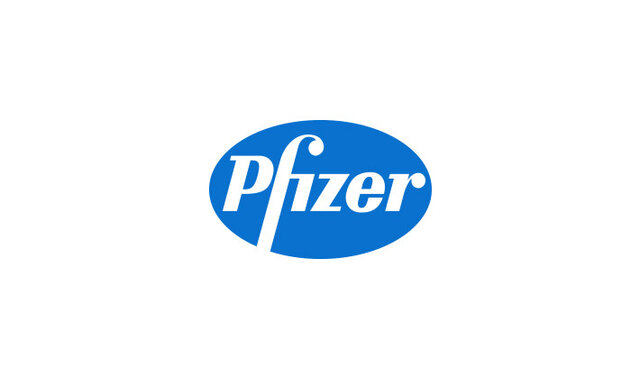
The study presented in the Emergency Use Authorization based its efficacy assessment on the results of PCR tests, which we now know are unreliable and prone to errors. Page 41 includes additional data about people who actually got sick after the inoculation. Significantly more people got sick in the test group after vaccination than in the control group. This information was charted by Karen Kingston and is presented toward the end of this post.
Under section 564 of the Federal Food, Drug, and Cosmetic Act (FD&C Act), when the Secretary of HHS declares that an emergency use authorization is appropriate, FDA may authorize unapproved medical products or unapproved uses of approved medical products to be used in an emergency to diagnose, treat, or prevent serious or life-threatening diseases or conditions caused by CBRN threat agents when certain criteria are met, including there are no adequate, approved, and available alternatives. — FDA statement on EAUs
In other words, if there is a viable option, an EAU should not be granted.

From page 4 of the Letter of Authorization, August 12, 2021
Effective treatment protocols using approved drugs existed prior to the first issuance of an EUA for vaccines. Doctors testified of this in the Senate.
Safety and efficacy testing is still ongoing for this product. Details are in the Review Memorandum found in the FDA’s main page for this product. Therefore, no advertising for this product may legally use the terms “safe and effective”.
Pfizer is required to report to VAERS any adverse reaction, whether or not is is attributed to the vaccine.

From page 8 of the Letter of Authorization, August 12, 2021
Was this reporting to VAERS done as required?
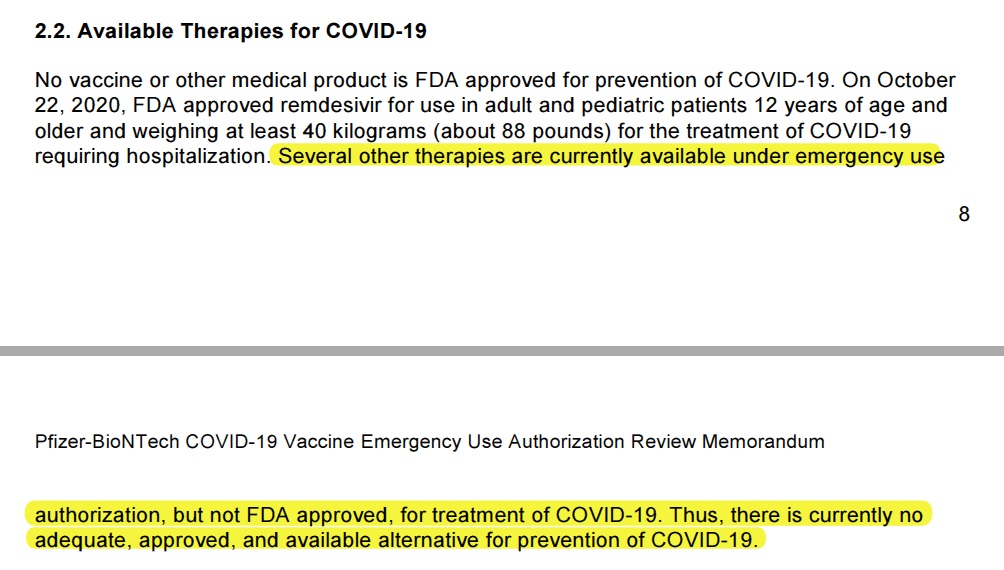
Statement about available therapies
The EUA acknowledges in the clip above that other therapies are available, but they have not been FDA approved specifically for the treatment of COVID-19. In saying this, they are admitting that they are relying on a technicality to qualify the vaccine for the EUA. An EUA should only be issued if there are no other options. Other options existed, but they had not been specifically approved for COVID-19 and thus were disregarded.
How long would it have taken for the other options to have been relabeled as treatment for COVID-19? Was it possible in the timeframe available up until this point? Should these other options have been disregarded in this way, given the clinical results being reported by those using these other options? Was there intent by the FDA to disregard? What was the motivation?
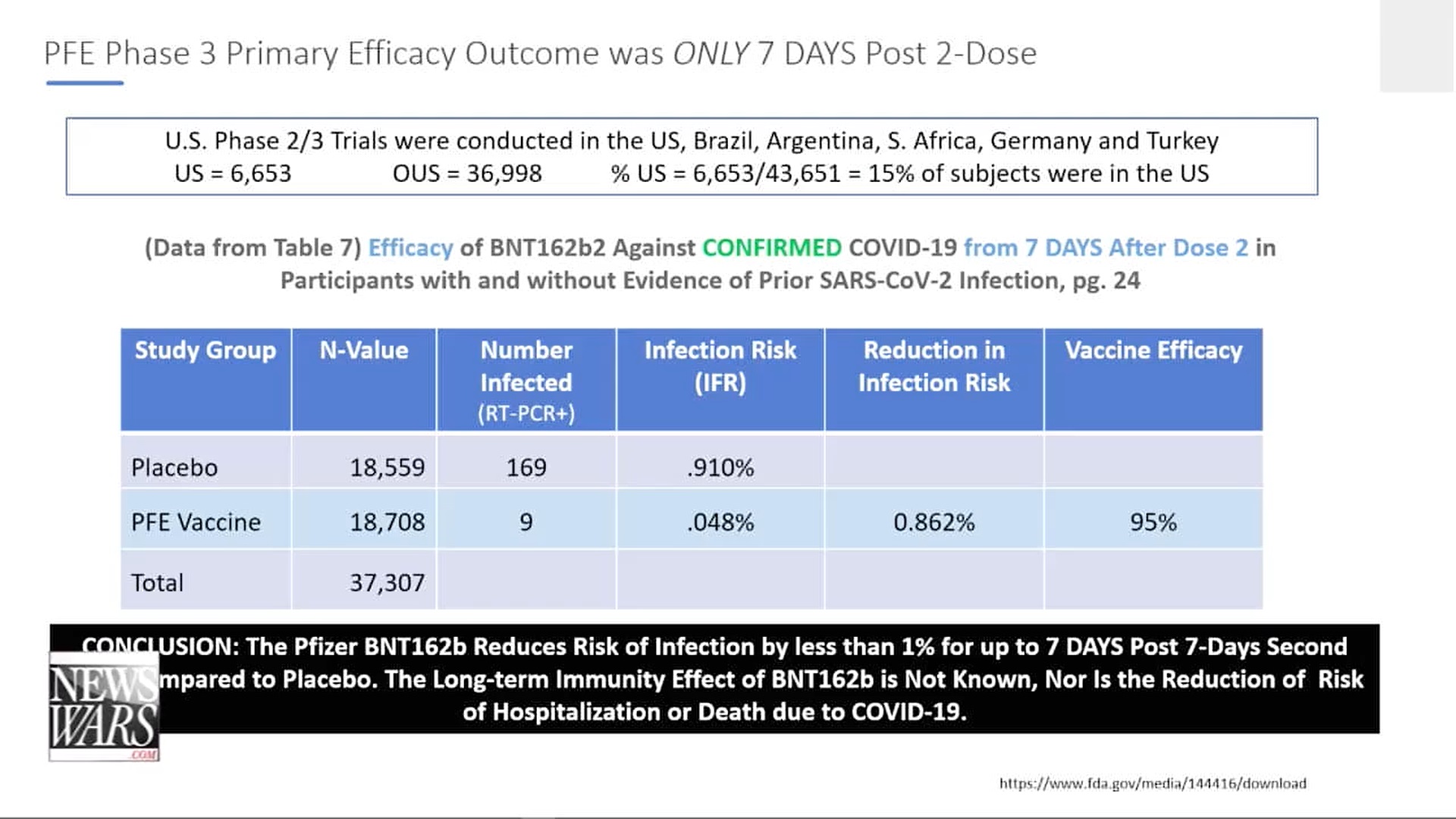
Charted by Karen Kingston: This is the efficacy that is being claimed.
Note that the follow-up period in the chart above is only 7 days. Karen Kingston found additional data in the report beyond 7 days, and the following chart shows those results. Also note that they were using PCR tests to determine who had been infected without regard for whether the person had symptoms.
How many cycles were used in evaluating the PCR tests? Were the same number of cycles used for both groups?
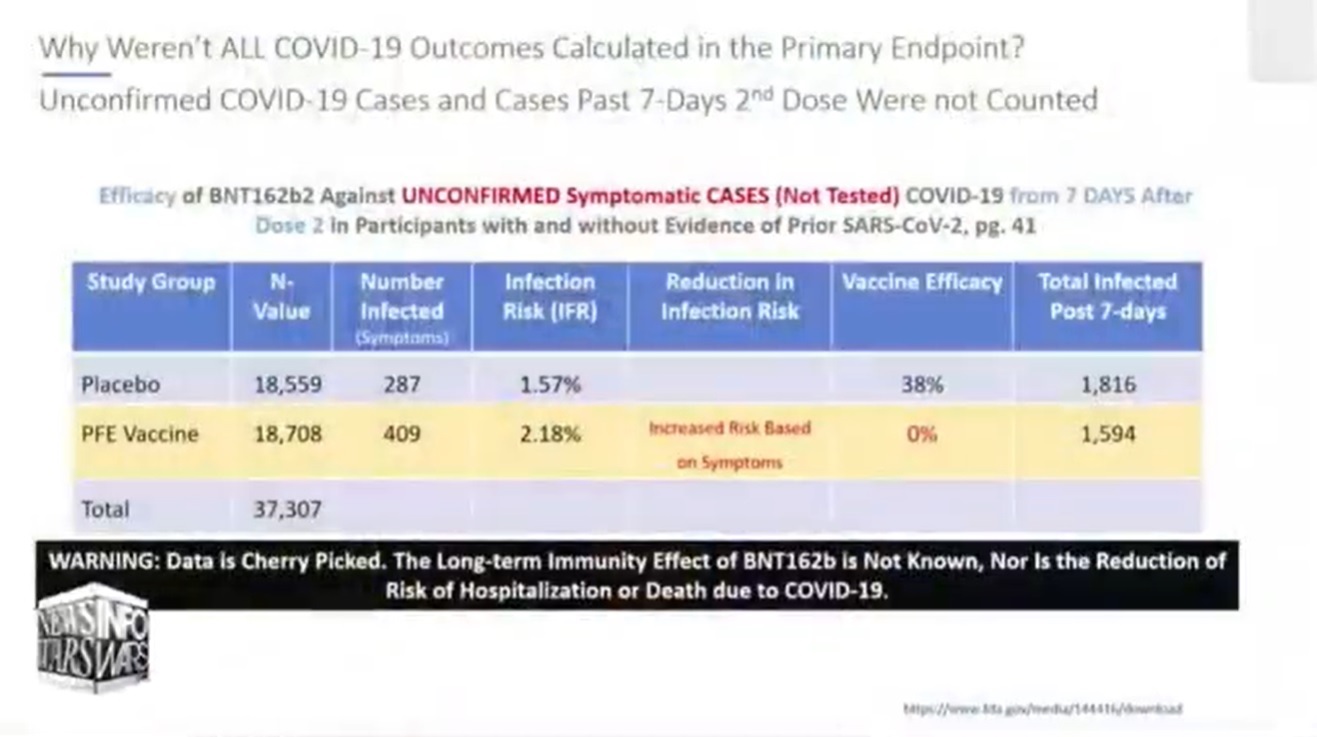
Charted by Karen Kingston: These are the results when all data is charted.

Text on page 41 from which chart of unconfirmed illness was derived
The above chart shows how many got sick as evidenced by symptoms. More unvaccinated people in the study may have tested positive on a PCR test, but this data shows that more vaccinated people actually had symptoms of being sick. And isn’t that really what matters?
I’m going to go out on a limb here. I am not a medical expert.
If more unvaccinated test subjects tested positive on a PCR test, but more vaccinated test subjects had symptoms, might this be early evidence of the ADE dangers of the vaccines predicted by industry experts?
Sources:
- US Food & Drug Administration. “Pfizer-BioNTech COVID-19 Vaccine.”

https://www.fda.gov/emergency-preparedness-and-response/coronavirus-disease-2019-covid-19/pfizer-biontech-covid-19-vaccine.
Food & Drug Administration.
This is the FDA’s main page for the Pfizer-BioNTech COVID-19 Vaccine. Links to FDA letters, memos, reports, and other documents relating the Pfizer-BioNTech COVID-19 Vaccine can be found here. - November 20, 2020. US Food & Drug Administration. “Emergency Use Authorization (EUA) for an Unapproved Product Review Memorandum.” [Pfizer-BioNTech]

https://www.fda.gov/media/144416/download.
Food & Drug Administration. - US Food & Drug Administration. “Emergency Use Authorization.”

https://www.fda.gov/emergency-preparedness-and-response/mcm-legal-regulatory-and-policy-framework/emergency-use-authorization.
Food & Drug Administration.
This is an information page describing the Emergency Use Authorization policies. - August 4, 2021. Andrew Kaufman with Karen Kingston. BOMBSHELL: Pfizer Whistleblower Confirms Covid Injections Are Poisonous Bioweapons. The Alex Jones Show.


https://freeworldnews.tv/watch?id=610b15ec4b401c2c26621b15.
News, Video.
Karen Kingston’s chart is a screen print from this video.
See also, on this site:
- August 22, 2005: Virology Journal: “Chloroquine is a potent inhibitor of SARS coronavirus infection and spread”
- July 2, 2020: Dr. Vladimir Zelenko publishes his COVID-19 treatment protocol.
- November 19, 2020: The United States Senate holds a hearing on Senate Hearing on COVID-19 Outpatient Treatment.

Under section 564 of the Federal Food, Drug, and Cosmetic Act (FD&C Act), when the Secretary of HHS declares that an emergency use authorization is appropriate, FDA may authorize unapproved medical products or unapproved uses of approved medical products to be used in an emergency to diagnose, treat, or prevent serious or life-threatening diseases or conditions caused by CBRN threat agents when certain criteria are met, including there are no adequate, approved, and available alternatives.
In other words, if there is a viable option, an EAU should not be granted.
Safety and efficacy testing is still ongoing for this product. Details are in the Review Memorandum found in the FDA’s main page for this product. Therefore, no advertising for this product may legally use the terms “safe and effective”.
Sources:
- US Food & Drug Administration. “Moderna COVID-19 Vaccine.”

https://www.fda.gov/emergency-preparedness-and-response/coronavirus-disease-2019-covid-19/moderna-covid-19-vaccine.
Food & Drug Administration.
This is the FDA’s main page for the Moderna COVID-19 Vaccine. Links to FDA letters, memos, reports, and other documents relating the Moderna COVID-19 Vaccine can be found here. - US Food & Drug Administration. “Emergency Use Authorization.”

https://www.fda.gov/emergency-preparedness-and-response/mcm-legal-regulatory-and-policy-framework/emergency-use-authorization.
Food & Drug Administration.
This is an information page describing the Emergency Use Authorization policies.
See also, on this site:
- August 22, 2005: Virology Journal: “Chloroquine is a potent inhibitor of SARS coronavirus infection and spread”
- July 2, 2020: Dr. Vladimir Zelenko publishes his COVID-19 treatment protocol.
- November 19, 2020: The United States Senate holds a hearing on Senate Hearing on COVID-19 Outpatient Treatment.
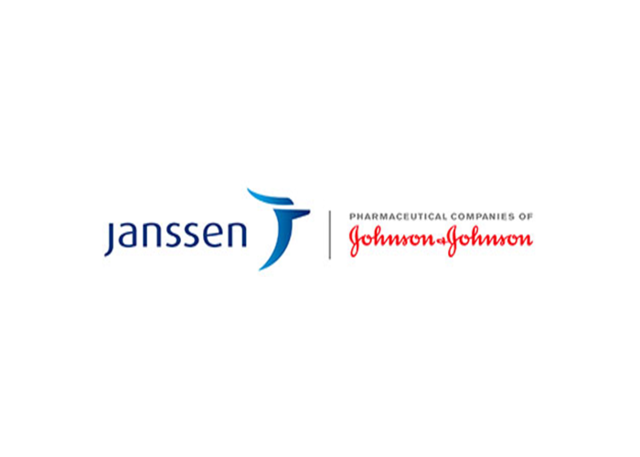
Under section 564 of the Federal Food, Drug, and Cosmetic Act (FD&C Act), when the Secretary of HHS declares that an emergency use authorization is appropriate, FDA may authorize unapproved medical products or unapproved uses of approved medical products to be used in an emergency to diagnose, treat, or prevent serious or life-threatening diseases or conditions caused by CBRN threat agents when certain criteria are met, including there are no adequate, approved, and available alternatives. — FDA statement on EAUs
In other words, if there is a viable option, an EAU should not be granted.
Safety and efficacy testing is still ongoing for this product. Details are in the Review Memorandum found in the FDA’s main page for this product. Therefore, no advertising for this product may legally use the terms “safe and effective”.
Sources:
- US Food & Drug Administration. “Janssen COVID-19 Vaccine.”

https://www.fda.gov/emergency-preparedness-and-response/coronavirus-disease-2019-covid-19/janssen-covid-19-vaccine.
Food & Drug Administration.
This is the FDA’s main page for the Janssen COVID-19 Vaccine. Links to FDA letters, memos, reports, and other documents relating the Janssen COVID-19 Vaccine can be found here. - US Food & Drug Administration. “Emergency Use Authorization.”

https://www.fda.gov/emergency-preparedness-and-response/mcm-legal-regulatory-and-policy-framework/emergency-use-authorization.
Food & Drug Administration.
This is an information page describing the Emergency Use Authorization policies.
See also, on this site:
- August 22, 2005: Virology Journal: “Chloroquine is a potent inhibitor of SARS coronavirus infection and spread”
- July 2, 2020: Dr. Vladimir Zelenko publishes his COVID-19 treatment protocol.
- November 19, 2020: The United States Senate holds a hearing on Senate Hearing on COVID-19 Outpatient Treatment.
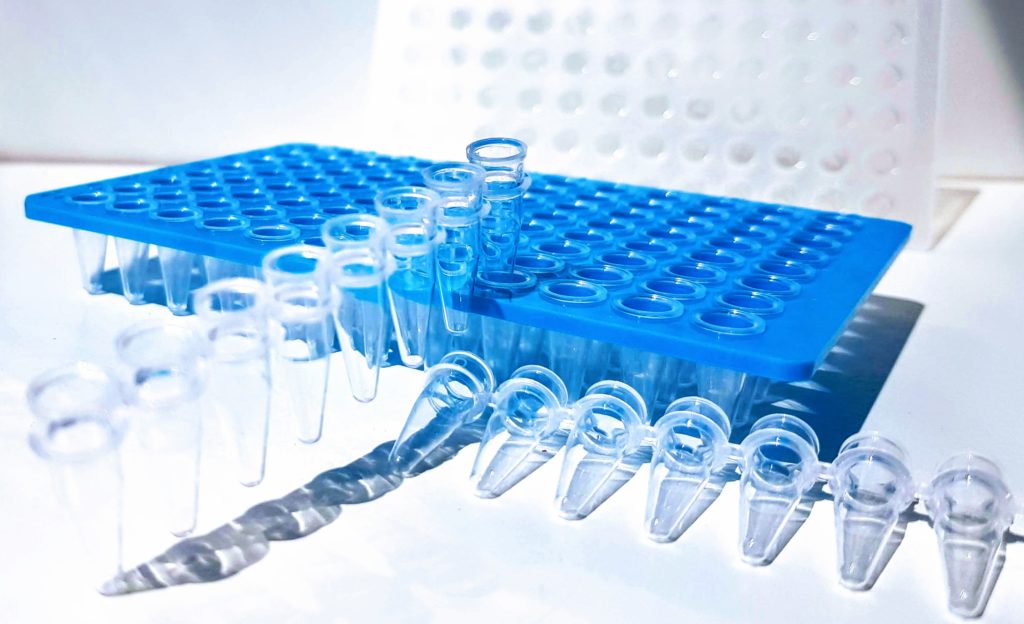
The CDC will end the Emergency Use Authorization for the RT-PCR test for SARS-CoV-2 on December 31, 2021. This alert was issued to give labs time to find other tests to use.
CDC encourages laboratories to consider adoption of a multiplexed method that can facilitate detection and differentiation of SARS-CoV-2 and influenza viruses. Such assays can facilitate continued testing for both influenza and SARS-CoV-2 and can save both time and resources as we head into influenza season.
The RT-PCR test for SARS-CoV-2 is designed to detect only that one virus. The CDC is recommending that labs use tests that can detect and differentiate the various viruses that are expected to be active next flu season.
There are viral messages going around saying that this CDC lab alert admits that the RT-PCR test for SARS-CoV-2 also tests positive for the common cold. I do not see that in this message. If false positives for SARS-CoV-2 due to detecting the common cold instead was the real problem, it would make more sense to issue a recall as was done for the Innova SARS-CoV-2 Antigen Rapid Qualitative Test. The Innova recall was immediate when it was issued. The end of the EUA for the RT-PCR test for SARS-CoV-2 is still four months away. Apparently, the CDC believes that the RT-PCR test for SARS-CoV-2 is good enough to use until then.
Revoking an EUA implies that the test is still in testing itself. I am not sure that we can deduce from the CDC statement that the RT-PCR test for SARS-CoV-2 failed its test. It simply may be that a better option was found. We may need to look to the FDA to learn more about this since it will be the FDA which will grant final approval to the RT-PCR test for SARS-CoV-2.
I am of the opinion that there is not yet enough information to support the viral message, which is why I suggest caution in considering and sharing it. If the viral message later proves to be true or false as CDC internal emails and memos are revealed, I will modify or remove this caution accordingly.
Declaring the end of the EUA to be December 31 seems controversial to me. At this current time, the official narrative includes the generation of variants, and we have had another surge in statistics. I choose that word carefully because we know that various means have been implemented to make the statistics say what those “in charge” want them to say, whether or not that message is the truth.
Proverbs 20:10 (CEV)
Two things the Lord hates
are dishonest scales
and dishonest measures.
- “Bible Gateway Passage: Proverbs 20:10 – Contemporary English Version.” Bible Gateway.

https://www.biblegateway.com/passage/?search=Proverbs+20%3A10&version=CEV.
Reference.
What happens on December 31?
What will have been accomplished by then?
Source:
- July 21, 2021. Centers for Disease Control and Prevention, Division of Laboratory Systems. “Lab Alert: Changes to CDC RT-PCR for SARS-CoV-2 Testing.”

https://www.cdc.gov/csels/dls/locs/2021/07-21-2021-lab-alert-Changes_CDC_RT-PCR_SARS-CoV-2_Testing_1.html.
Centers for Disease Control and Prevention.
Related:
- February 11, 2020. “CDC’s Influenza SARS-CoV-2 Multiplex Assay and Required Supplies.” Centers for Disease Control and Prevention.

https://www.cdc.gov/coronavirus/2019-ncov/lab/multiplex.html.
Centers for Disease Control and Prevention. - January 3, 2022. The PCR Test Was Based On A Computer Model and Lost Its EUA. Reality Check. Runtime: 2:28.

https://odysee.com/@Fingerbob:c/THE-PCR-TEST-WAS-BASED-ON-MIMIC-AND-LOST-IT–x27-S-EMERGENCY-USE-AUTHORIZATION#b.
Video.
See also, on this site:
]]>Source:
- January 26, 2022. Stew Peters with Karen Kingston. “FDA Broke Pfizer’s EUA Shield: Liability Protection Gone, Time To Bring Down The Gavel.” Red Voice Media, The Stew Peters Show.

https://www.redvoicemedia.com/2022/01/fda-broke-pfizers-eua-shield-liability-protection-gone-time-to-bring-down-the-gavel/.
News.
There never should have been a need for an Emergency Use Authorization for Hydroxychloroquine. HCQ was approved by the FDA in 1955. Preventing or treating COVID-19 are not labeled uses, but that should not prevent practitioners from prescribing it. The off-label use policy allows practitioners to prescribe as they deem appropriate.